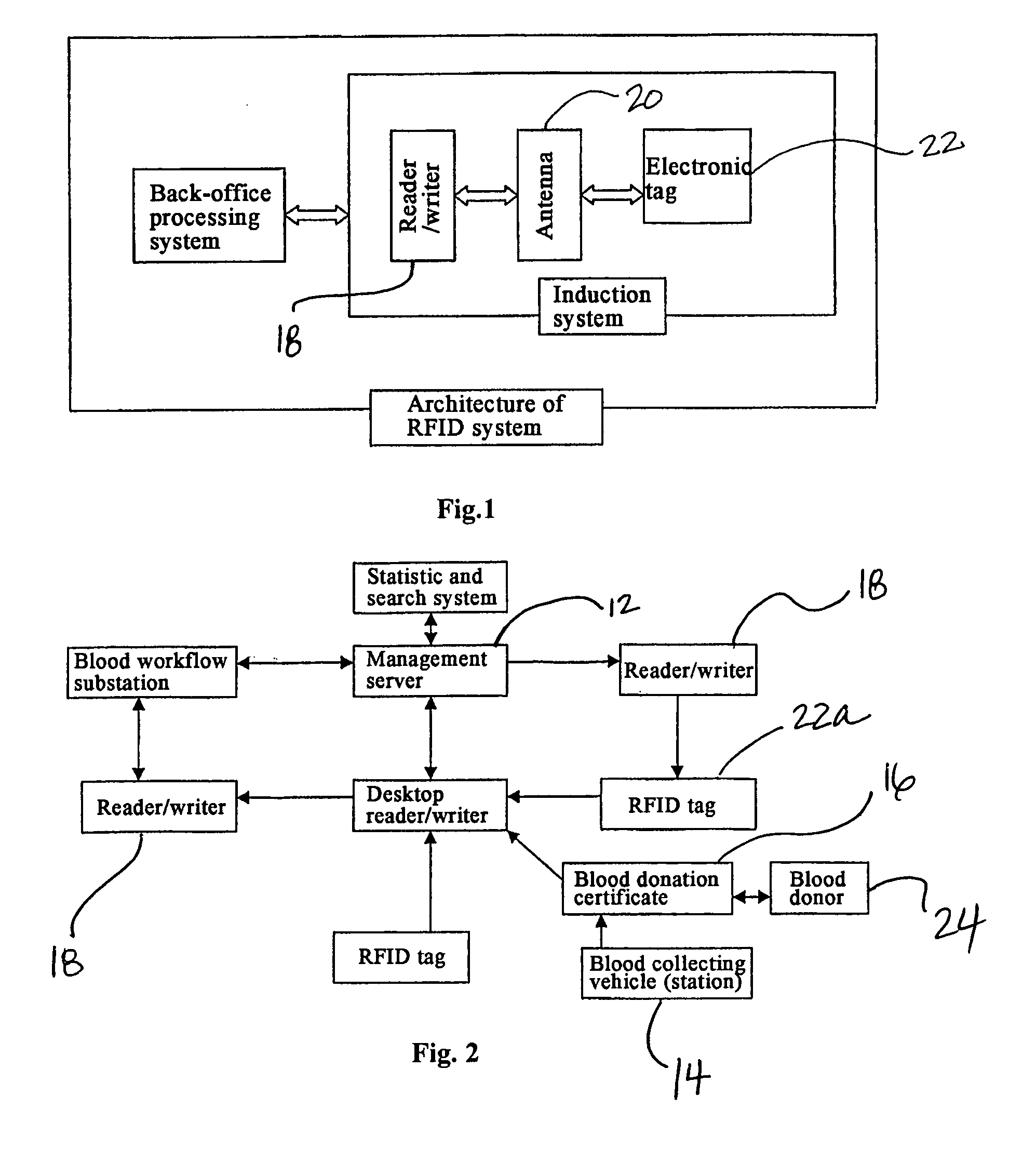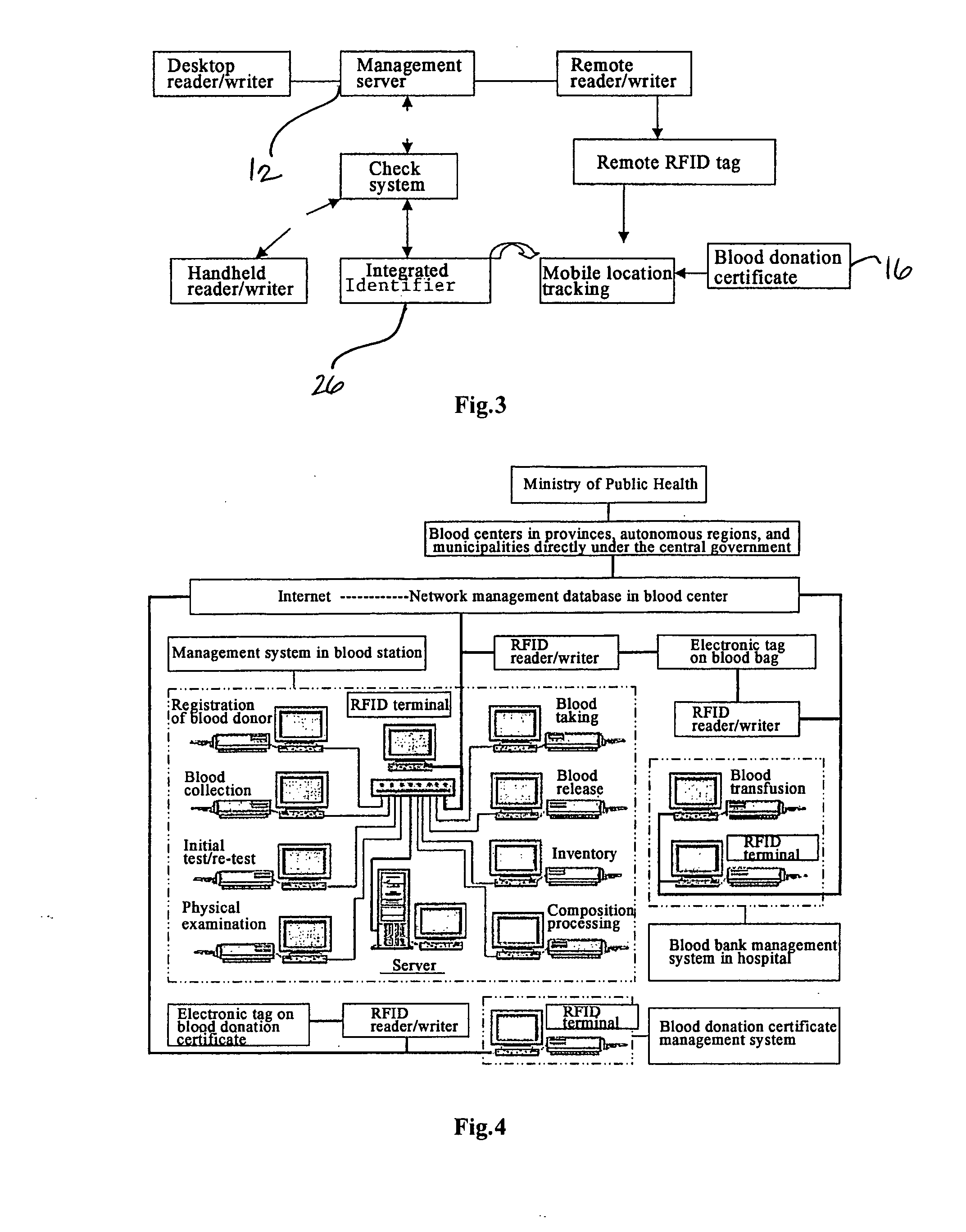Method and System of Using Rfid in the Workflow of Blood Center
a blood center and workflow technology, applied in the field of rfid in the workflow of blood centers and medical institutions, can solve the problems of waste in many aspects, ineffective real-time medical tests, and not all patients carrying hepatitis c virus around the world can be detected with existing reagents and detection methods, so as to reduce “leakage rate”, reduce “false positive” or “false negative” results, and improve the ability to perform
- Summary
- Abstract
- Description
- Claims
- Application Information
AI Technical Summary
Benefits of technology
Problems solved by technology
Method used
Image
Examples
Embodiment Construction
[0047]Some embodiments of the method and system of the present invention in the blood management field are shown in FIGS. 1-4. The technical scheme of the present invention employs embedded RFID technique to implement a RFID network management system (medical blood CRM) of blood center.
[0048]Referring to FIGS. 1-2, the system of the present invention comprises terminal equipment (or management server) 12, blood collection vehicle 14 (or blood stations or plasma stations), blood donation certificates 16, RFID devices including electronic tag reader / writers 18, antennae 20, electronic tags 22 that have unique electronic ID and are attached to blood bags to identify the target object, electronic blood donation certificates 16 containing a variety of information, and computer information network and computer database technology for customer information management. Reader / writer 18 is of handheld or fixed type working at 13.56 MHz (high frequency).
[0049]The terminal equipment is connecte...
PUM
 Login to View More
Login to View More Abstract
Description
Claims
Application Information
 Login to View More
Login to View More - R&D
- Intellectual Property
- Life Sciences
- Materials
- Tech Scout
- Unparalleled Data Quality
- Higher Quality Content
- 60% Fewer Hallucinations
Browse by: Latest US Patents, China's latest patents, Technical Efficacy Thesaurus, Application Domain, Technology Topic, Popular Technical Reports.
© 2025 PatSnap. All rights reserved.Legal|Privacy policy|Modern Slavery Act Transparency Statement|Sitemap|About US| Contact US: help@patsnap.com



